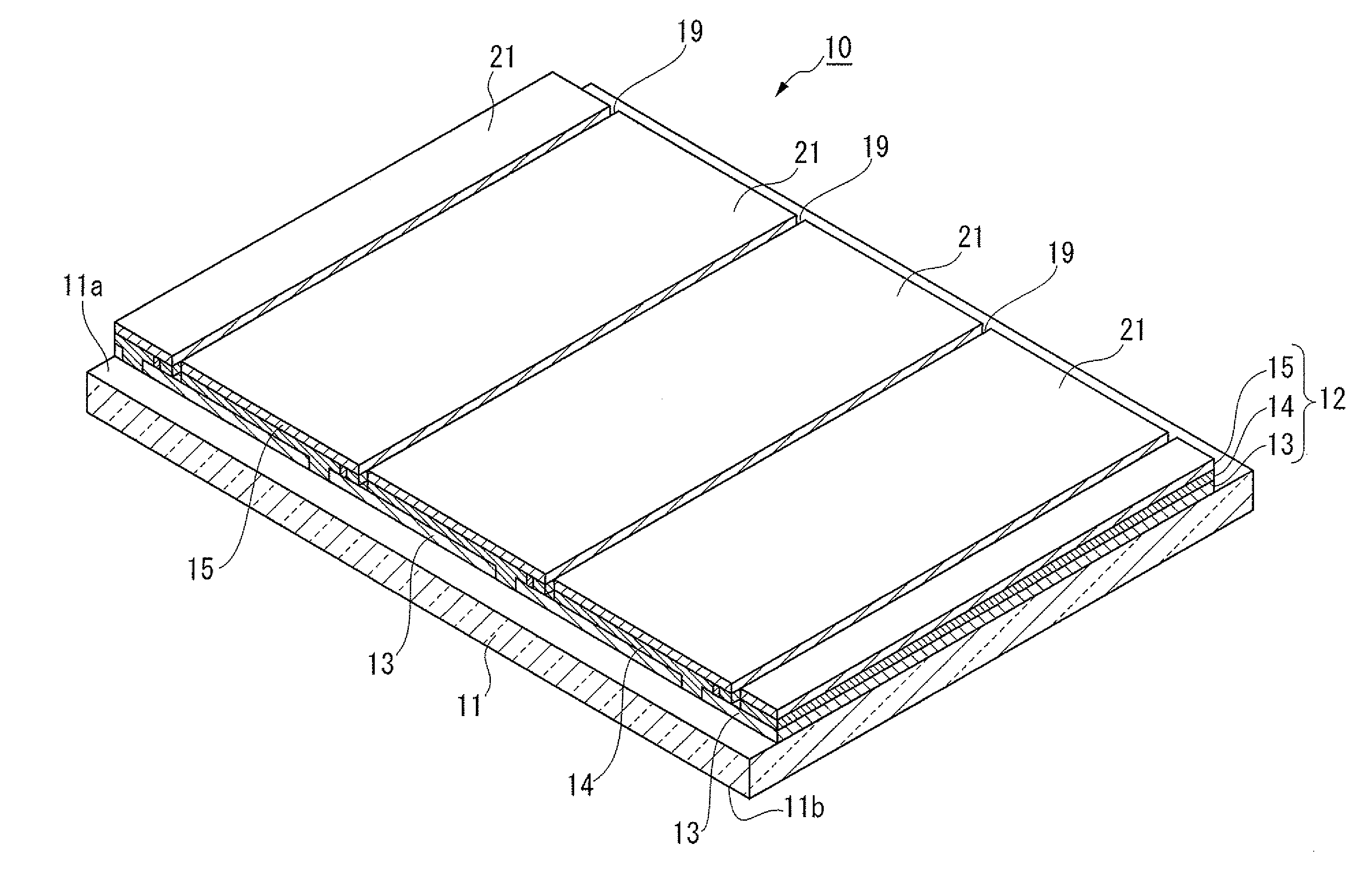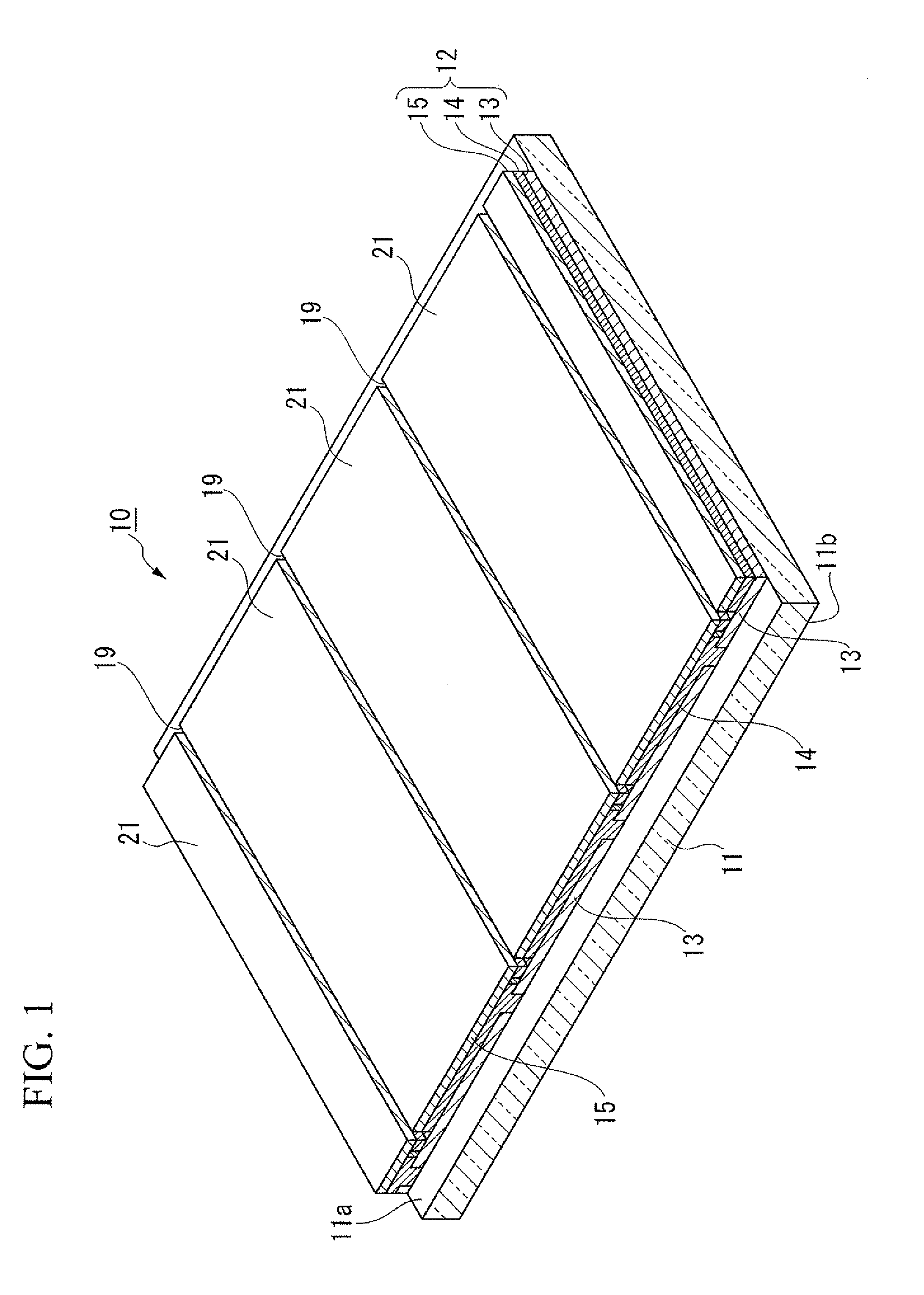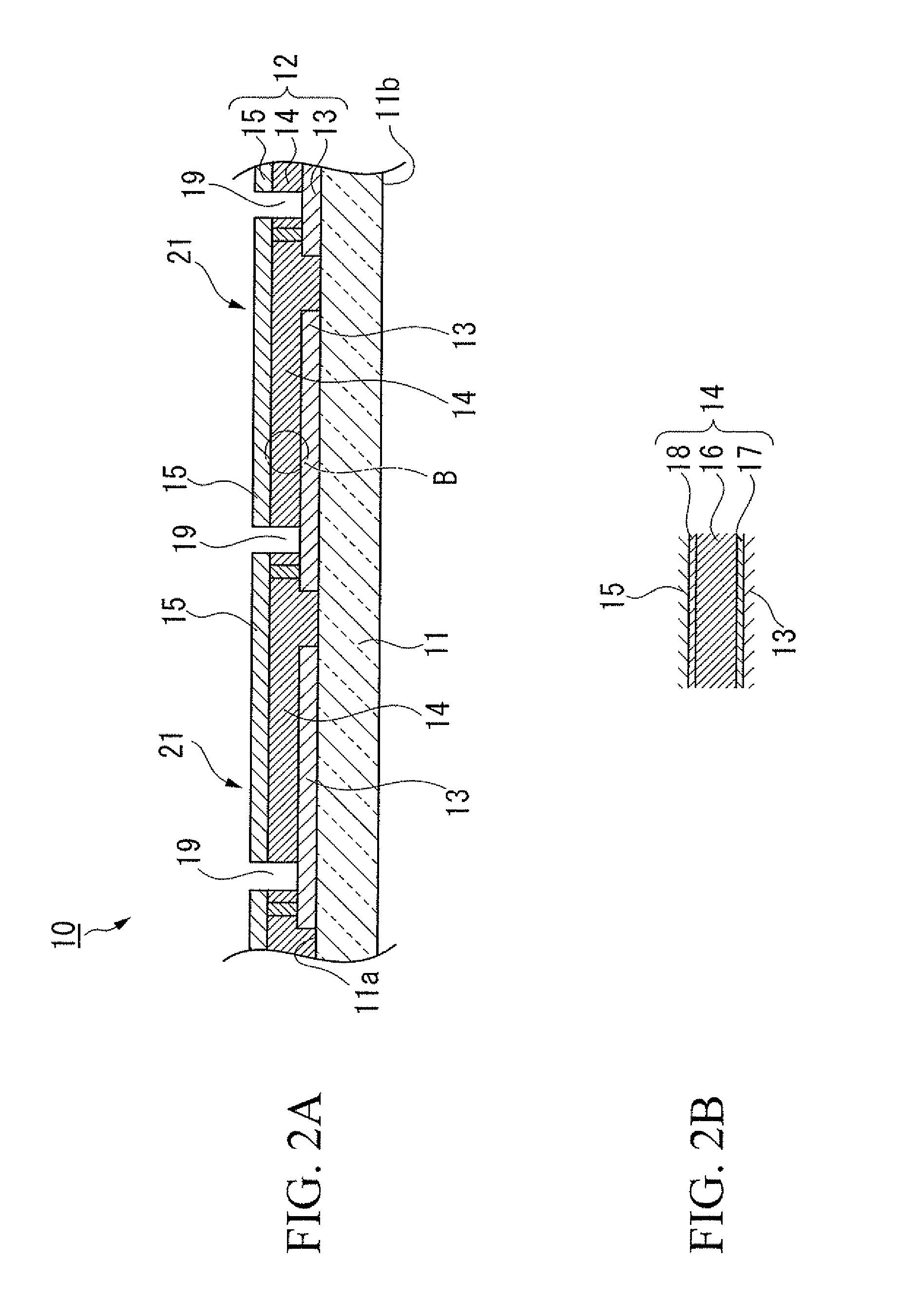Photovoltaic cell manufacturing method and photovoltaic cell manufacturing apparatus
- Summary
- Abstract
- Description
- Claims
- Application Information
AI Technical Summary
Benefits of technology
Problems solved by technology
Method used
Image
Examples
Embodiment Construction
[0045]Hereinafter, the best mode of a photovoltaic cell manufacturing method and a photovoltaic cell manufacturing apparatus used therefor related to the present invention will be described with reference to drawings.
[0046]The embodiment is specifically explained for appropriate understanding of the scope of the present invention.
[0047]The technical scope of the invention is not limited to the embodiments described below, but various modifications may be made without departing from the scope of the invention.
[0048]In the respective drawings used in the explanation described below, in order to make the respective components be of understandable size in the drawing, the dimensions and the proportions of the respective components are modified as needed compared with the real components.
[0049]FIG. 1 is an enlarged perspective view showing an example of a main section of an amorphous silicon type photovoltaic cell which is manufactured by a method for manufacturing a photovoltaic cell of...
PUM
 Login to View More
Login to View More Abstract
Description
Claims
Application Information
 Login to View More
Login to View More - Generate Ideas
- Intellectual Property
- Life Sciences
- Materials
- Tech Scout
- Unparalleled Data Quality
- Higher Quality Content
- 60% Fewer Hallucinations
Browse by: Latest US Patents, China's latest patents, Technical Efficacy Thesaurus, Application Domain, Technology Topic, Popular Technical Reports.
© 2025 PatSnap. All rights reserved.Legal|Privacy policy|Modern Slavery Act Transparency Statement|Sitemap|About US| Contact US: help@patsnap.com



